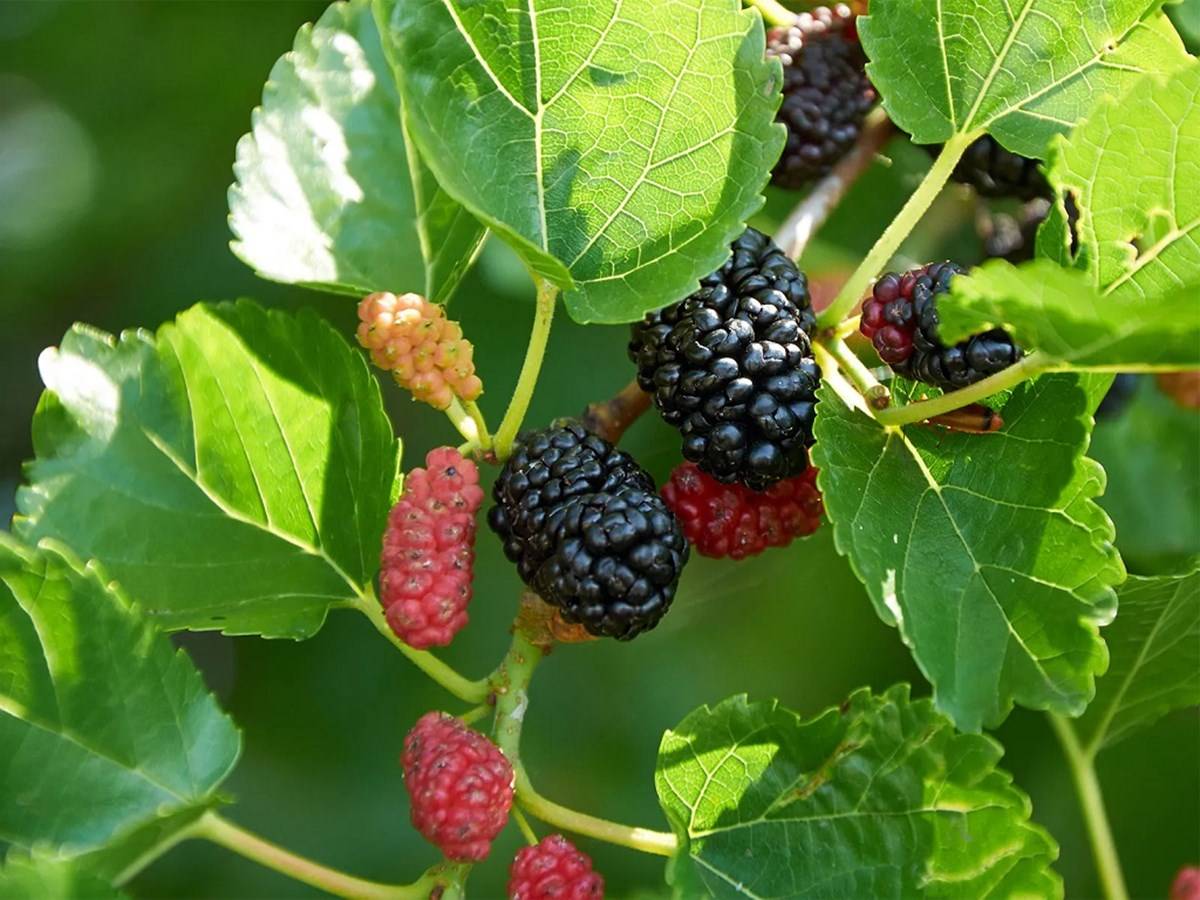
Mulberry is a medium-sized deciduous tree that produces small, tasty but messy fruits in summer and there are two species commonly found in North America: white mulberry, a native of China, and red mulberry, a native of eastern North America that is now widely naturalized in North America. Both the red and white species as well as any hybrids possess serrated edges with dark green leaves and the berries look strikingly similar to blackberries. Mulberry leaves are also an important food source for silkworms for producing silk.
Soil and climate requirements
The ideal temperature for mulberry growth and good bud sprouting should be between 24 and 28 degrees Celsius, with a relative humidity of 65 to 80 percent and a 5–12-hour duration of sunlight required per day.
Mulberry can be grown in a rainfed area having a rainfall range from 600mm to 2500mm. Under low rainfall conditions, the growth is limited and they require additional irrigation. Slightly acidic soils having pH (6.2 to 6.8) and free from injurious salts are ideal for the good growth of mulberry plants. Generally, saline and alkaline soils are not preferred for mulberry plants.
Mulberry varieties
-
DD(Vishwa), MR 2, S 54, S 36, S 30, V1 for irrigated areas.
-
Semi-irrigated: MR 2, Kanva 2
-
S 34, S 13, RFS 175, RFS 135, and S 1635 for rainfed areas.
Propagation of mulberry
Mulberry is mostly propagated through cuttings. Cuttings may be planted straight in the main field, or the nursery may be raised and the sprouted and rooted saplings may be planted in the main field. The latter method is desirable because of its ease of establishment in the main field.
Planting material selection
Generally, mulberry plants are raised from semi-hardwood cuttings, and cuttings are selected from well-established gardens of 8–12 months old. Cuttings of stems for growing are free from insect and disease damage, having a diameter of 10-12 mm are chosen for the cultivation of mulberry plants, and the cuttings should be of 15-20 cm with 3-4 active buds are required. Care should be taken to make a sharp clean cut at both ends of the cuttings without indenting the bark. A manual or stem cutting machine is available for quick cutting of propagation material.
Nursery bed preparation
-
Select an 800 sq. m. area of red loam soil near a water source for raising seedlings for planting one hectare of the main field.
-
Apply 1600 kg of farm yard manure (FYM) and mix well with the soil. Raised nursery beds of 4m x 1.5m size and the length may be suitable size depending upon the slope, irrigation source, etc., and also provides a drainage channel and avoid shaded areas.
Intercropping and Mulching
Intercropping with short-duration legume crops improves the soil, gives additional revenue, and also controls weed growth. Grow any one of the following varieties as an intercrop with mulberry plants:
Black gram - Co 5, VBN 1, VBN 3, VBN 4
Green gram - Co 5, Pusa bold, VBN 2, VRM 1, Co 6
Cowpea - Co 4, Co 5, Pusa 152
-
Seed rate: 10 kg/ha
-
Sowing the intercrop after pruning and earthing up and mulching is useful for controlling weed growth and converse soil moisture by reducing run-off and also increasing the infiltration of water and reducing soil temperature.
Harvesting
The method of leaf harvest depends on the type of rearing practiced. It is preferable to harvest the leaves during morning hours.
There are three methods of mulberry leaf harvesting.
Leaf picking
Individual leaves are harvested with or without petiole and leaf picking starts ten weeks after the bottom subsequent pickings and pruning are done at an interval of 7 - 8 weeks.
Branch cutting
The entire branches are cut and fed to the worms and before that topping is done to confirm the uniform maturity of the lower leaves.
Whole shoot harvest
The branches are cut at ground level by bottom pruning and shoots are harvested at an interval of 10-12 weeks thus 5 - 6 harvests are made in a year.









